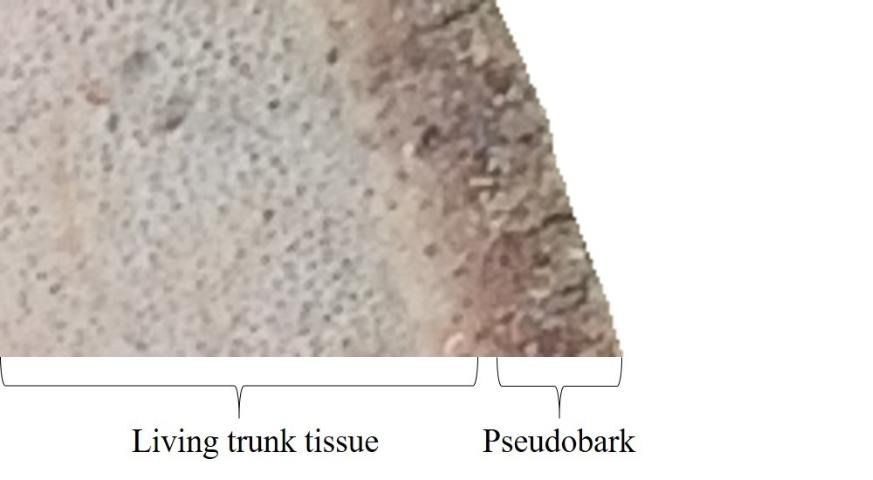Introduction
In Florida, palms are an economically important group of trees. They are primarily used as ornamentals and have a significant impact on the nursery and landscaping industries. Phytoplasma diseases of palms are of major concern because both lethal yellowing (LY) and Texas Phoenix palm decline (TPPD) cause plant death in a variety of important ornamental palms. Once symptoms appear, the rate of decline is variable, but often is very rapid with the death of the palm in as few as three to five months. Historically, palms that express symptoms or suspected symptoms of phytoplasma disease are sampled and sent to the University of Florida Plant Disease Diagnostic Clinic at the UF/IFAS Fort Lauderdale Research and Education Center (FLREC) to test for phytoplasma. Typically, palms are sampled once symptoms are noticeable, which leaves only a narrow margin for implementing a management decision that could save the palm. Palms may be treated with antibiotics (oxytetracycline HCl, OTC) or quickly removed to reduce the likelihood of the insect vector spreading the phytoplasma to other palms. This narrows the margin for action even more, necessitating a sensitive and rapid test to detect the phytoplasma. Proper sample collection technique is key to getting reliable results as quickly as possible. Collecting good samples is the first and most important step toward managing LY and TPPD phytoplasmas or indeed any palm disease.
Sampling
When sampling a palm for phytoplasmas, some basic equipment (Table 1) will allow you to obtain a high-quality sample that will yield accurate results. After you assemble all of the equipment and choose a palm to sample, begin by flame sterilizing a drill bit and cooling it off with sterile distilled water (Figure 1). Next, select a location on the trunk approximately two feet (about 0.6 meters) above the ground and drill a hole (Figure 1). Palms contain both living and dead tissues. The brown outermost tissue, called pseudobark, is the dead tissue and should be discarded. Drill through the dead tissue, pull the drill out, clean the drill, and then resume drilling into the living tissue. The depth of the pseudobark is variable among palm species, thus this step involves observation to determine how much to remove. The living tissue is typically an off-white color (Figure 2). Continue drilling to obtain approximately two tablespoons worth (three grams/0.1 oz.) of the living trunk tissue. Without touching the tissue, put it into a plastic zipper-closure bag and seal carefully (Figure 1). The use of nitrile gloves is highly recommended in order to avoid contamination. Excess tissue on the drill bit can be scraped into the bag using a sterile toothpick or individual coffee stir straw. The trunk tissue need not be obtained from the same hole, and in fact it is advisable to take tissue from different spots around the circumference of the trunk, for a total of 0.1 oz./three grams. Hammer golf tees into the sample holes to seal them and protect the tree.
In order to eliminate cross contamination, if samples are to be taken from more than one tree, then the drill bit must be sterilized between samples by rinsing it with distilled water, flame sterilizing it, and cooling it off with more sterile distilled water before proceeding to the next tree. Label sample bags with the date and locality (Figure 1). All samples taken in the field must be stored immediately in a cooler with ice packs to keep them cold and away from sunlight. Number the samples sequentially and store them in a refrigerator until they are ready to be submitted. If it is at all possible, it is recommended to send samples overnight the day they are taken.

Credit: Brian Bahder

Credit: Brian Bahder
Submitting Samples
Complete a Sample Submission form and send it with the samples in the overnight package. The form for submitting palm samples to test for phytoplasma diseases can be found at https://flrec.ifas.ufl.edu/media/flrecifasufledu/deleted-photos-pdf-etc/Palm-Submission-Form.pdf.
Send samples overnight to the following address:
Attn: Dr. Brian Bahder
University of Florida
Fort Lauderdale Research and Education Center
Vector Entomology Lab
3205 College Avenue
Davie, FL 33314-7719